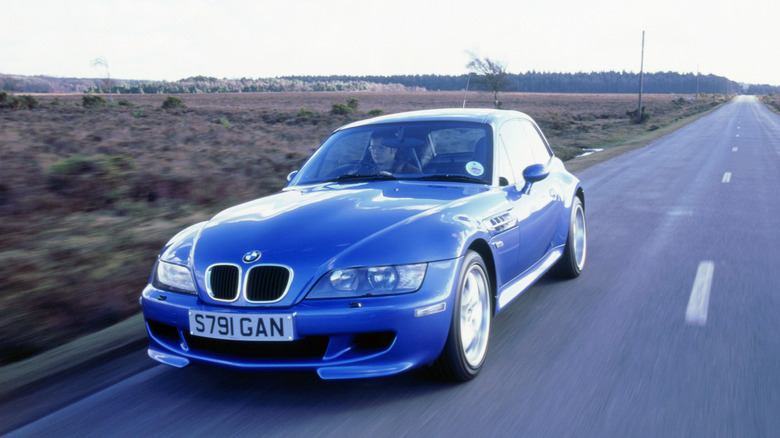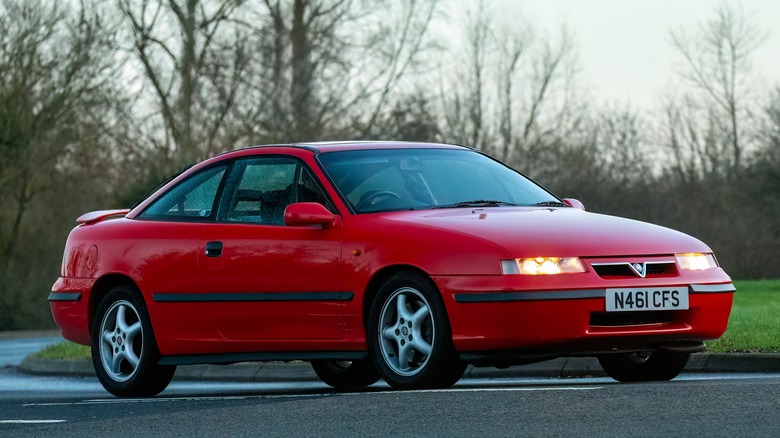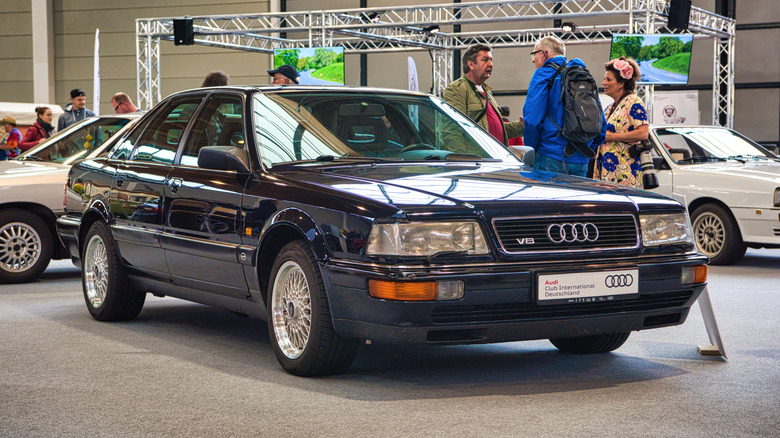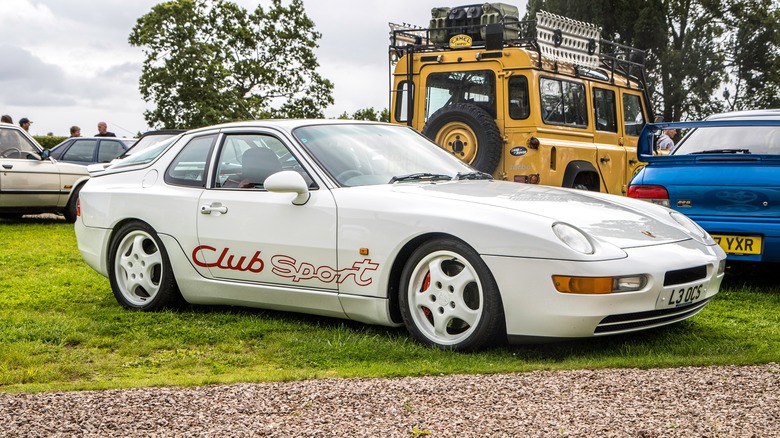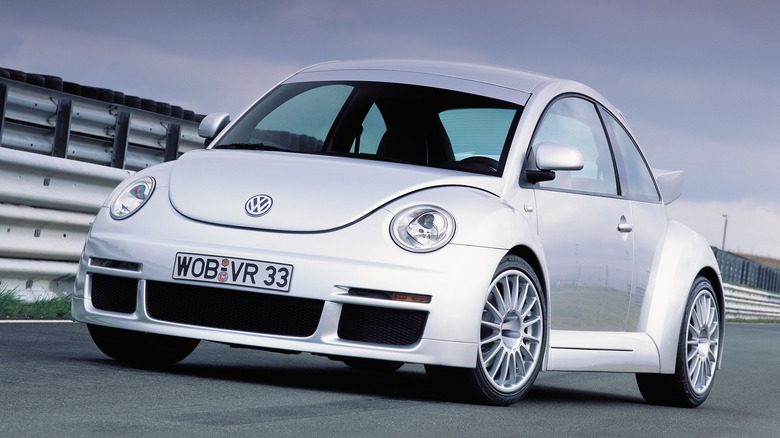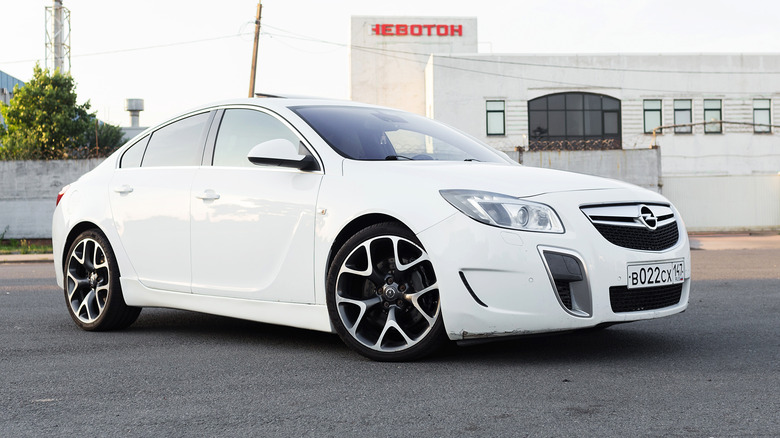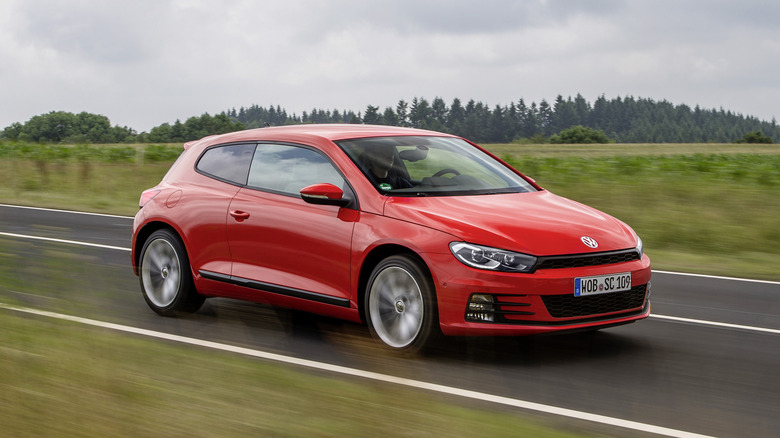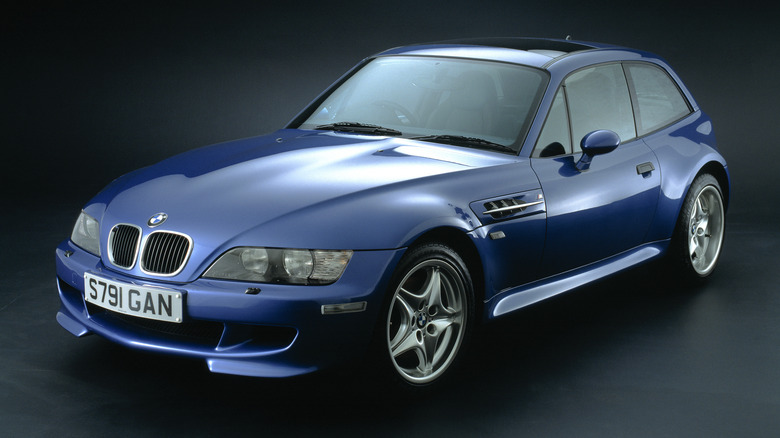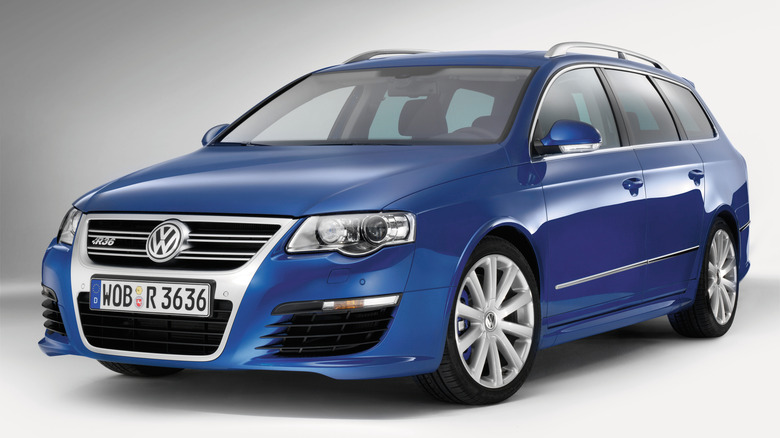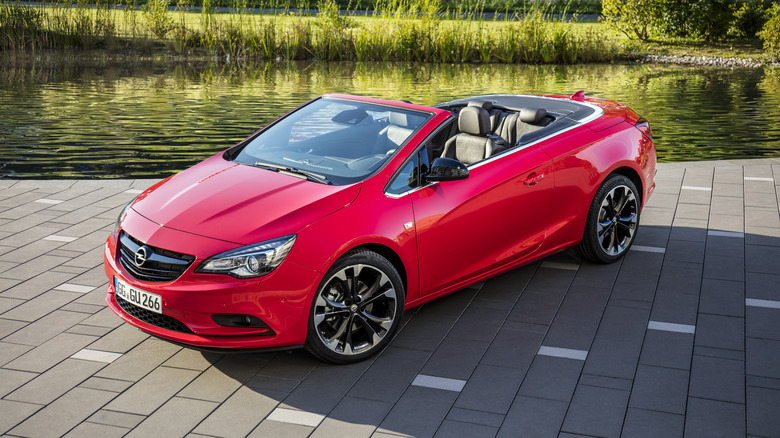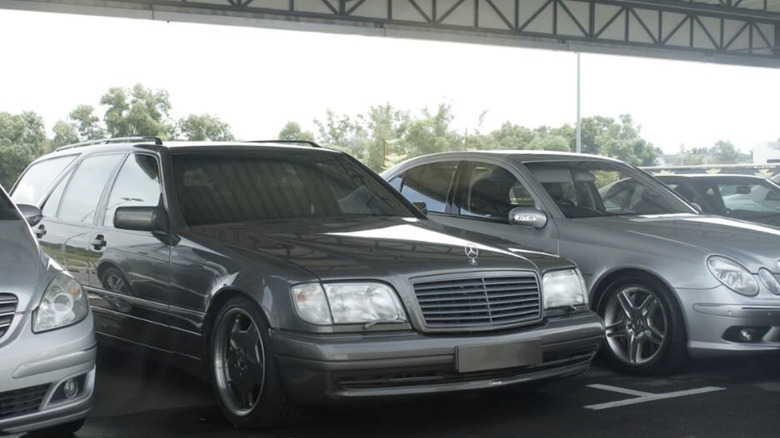10 Forgotten German Cars That Deserve More Attention
German cars are kind of an anomaly. On one hand, they represent some of the best engineering and dedication to performance in the entire automotive industry. On the other hand, it seems like enthusiasts can't stop making fun of VW Das Auto this, BMW mating call that, rod bearings, IMS failures, and so on. But despite having numerous flaws, German cars hold a special place in a lot of drivers' hearts, which also explains their massive rise in value over the last few years.
However, everyone tends to huddle around and fantasize over the same sort of German cars. BMW M3s and M5s, Porsches, C63 AMGs, the latter being a perfect example of a German muscle car. These are all great, but due to their monumental popularity, countless excellent German cars have slipped through the cracks. A lot of people don't remember some of these, as they're too busy trying to see how much the E46 M3 will go up in value today.
Many enthusiasts won't remember or even really care about a lot of these, which is unfortunate, as they have quite a lot to offer. Let's set aside Bavaria, Stuttgart, and Ingolstadt's greatest hits for just a quick moment — there's a lot more than that coming out of Germany.
Opel Calibra
Also known as the Vauxhall Calibra in the U.K., this sporty coupe launched in September of 1989 as the automaker's flagship. Underneath the glorious late 80s-early 90s bodywork lay the platform from the first generation Vectra. Speaking of that bodywork, that's one of the Calibra's many claims to fame: It was one of the most aerodynamic production cars in the world when it was launched. With a drag coefficient of just 0.26, the Calibra is right up there with the most aerodynamic of modern electric cars.
The car offered a variety of engines to choose from, including a 2.5-liter V6, which wasn't all that fast due to the larger weight over the nose and the lack of any forced induction. The cream of the Calibra crop was the Turbo 4x4. That one had a punchy 2.0-liter turbo I4 making 201 hp, and obviously, it sent power to all four wheels. Even then, the Calibra is one of many cars that proved FWD is not a drivetrain for the faint-hearted.
Despite the Calibra's many excellent qualities, no one seemed to talk about it for long. Most people were too busy fawning over competitors like the Nissan S14 and the E36 Coupe. While values on the rise, the Calibra's amazing engineering and forward thinking are definitely deserving of more love. Not to mention, it made mincemeat of its competitors at the DTM championship.
Audi V8
It's hard to believe, but at one point, Audi wasn't one of the primary choices when it came to sports sedans and premium cars. That was until the Quattro absolutely dominated the WRC in the 80s, and showed the world that AWD in regular production cars makes all the sense in the world. Spurred on by the success and by being taken more seriously, Audi rolled out a true flagship full-size luxury sedan: the V8.
That's not a typo. No prizes for guessing what sort of engine powered the Audi V8. Under the hood of the understated, boxy sedan was a 3.6-liter naturally aspirated unit at first, which later became a 4.2-liter unit. Power went to all four wheels through the buyer's choice of either a five-speed manual, a six-speed manual, or a four-speed slushbox. Incidentally, the V8 was the first time that the Quattro system was paired up with an automatic transmission.
Underneath the admittedly familiar bodywork was a reworked version of the D1 platform that underpinned the more ordinary Audi 100 and 200. The exterior was similar to those, but the V8 was significantly larger. The V8 is one of the most elusive cars in Audi's history, and due to its importance especially in laying the foundations for what would become the A8, the V8 is definitely an Audi worth remembering.
Porsche 968
Before the heyday of the Boxster and the Cayman, Porsche's idea of an entry level model had a four-cylinder engine in the front. The runt of the litter 924 and its engine from a VW moving van came first. Then, the 944 absolutely stole the hearts of Porsche enthusiasts, remaining one of the most sought after models even to this day. But there was also one more front-engined four-cylinder Porsche — the one that brought the dynasty to an official end: the 968.
Despite being a totally new model, the 968 was essentially a significantly reworked 944. The front end was heavily restyled to resemble the 928, frog eye pop-ups included. Most of the other body panels were new, but the architecture was simply carried over. As before, the 968 offered a group of four-cylinder engines, as well as a choice of manual or automatic transmission, the latter including tiptronic shifting capabilities.
While the 968 certainly lived up to expectations, it came along around the time of Porsche's financial turmoil. Combined with the fact that most Porsche buyers just wanted a 911, the 968 wasn't all that successful, although some variants have since gone up in value quite a bit. The 968 has plenty to offer, and it's time Porsche enthusiasts took another glance at it. It is, after all, more affordable than the 944 in most cases.
Volkswagen Beetle RSI
One of the VW Group's most celebrated powertrains, the VR6 engine made it possible to install larger capacity engines with more cylinders into smaller vehicles with transverse engine layouts. By the late 90s, Volkswagen was cooking up an ultra high-performance variant of the Golf that would sit above the GTI and use the VR6 engine. Before that, VW rolled out a super limited proof of concept of the VR6 powered hatchback. The basis for this proof of concept? The New Beetle.
Launched in 2001, the Beetle RSI came from the same hot hatchback school as the Renault Clio V6 — in other words, hot hatchbacks that we'll likely never see again. While its engine wasn't in the middle, the Beetle RSI was almost as crazy as the above-mentioned Frenchie. Under the hood was a 3.2-liter version of the VR6 putting out 221 hp, which went to all four wheels through a six-speed manual transmission.
On the outside, crazy widened wheel arches and massive bumpers adorned the otherwise cutesy retro exterior, showing that this Beetle wasn't to be messed with. A set of OZ wheels and massive twin tailpipes contributed to that even more. Only 250 of these hopped up Beetles exist, so it's easy to see why it has been forgotten. However, just for starting the short-lived era of V6-powered hatchbacks in the 2000s, the Beetle RSI absolutely deserves a special place in the history books.
Opel Insignia OPC
After three generations of the underwhelming, plain-as-day Vectra, Opel knew that the replacement had to pull out a lot more stops. The Insignia, launched in 2008, was a significant improvement and went on to become one of Europe's favorite family sedans. It even reached North America as the revived Buick Regal. With the final Vectra having its own OPC version, an Insignia OPC followed close behind.
This time, Opel learned its lesson. The Vectra OPC had too much power for its front wheels to handle, earning it a PhD in hideous understeer. The Insignia OPC, known as the Vauxhall Insignia VXR in the U.K., remedied this issue by throwing the rear wheels into the mix. Under the hood was a 2.8-liter turbo V6, essentially the same unit as the ill-fated final generation Saab 9-5, putting out a more than solid 321 hp.
Despite being excellent value and a solid, if not crazy performance car, the Insignia OPC's German rivals stirred the souls of buyers a whole lot more. For those who want something a little more left-field than the standard S4s, 335is and C350s, the insanely affordable Insignia OPC could be right up their alley.
Volkswagen Scirocco (Mk3)
After a 16-year hiatus, Volkswagen reintroduced the Scirocco to Europe in 2008. Despite the radically different styling, not just compared to the Mk2 but also virtually all of its family members, the Scirocco followed the same principle as the original. Golf architecture with sportier, three-door hatchback styling and an emphasis on fun.
Looking cool and being fun was something that the Scirocco excelled at. Despite the humble Golf underpinnings, this was a great car to thrash around, no matter what powertrain was under the hood. Of course, it was best enjoyed with the larger turbo gas engines, particularly the 2.0-liter TSI in the Scirocco R.
Even though the Scirocco had a lot going for it, the competition back in the late 2000s was fierce. For one, it had to face off against its own cousins, the Golf GTI and R32. The Volvo C30, the Ford Focus ST and RS, the Alfa Brera, and even the RWD stuff on offer like the Mazda RX-8 and Honda S2000 were just a small chunk of the Scirocco's rivals. Alongside the market crash of 2008, the late 2000s was also the beginning of the end for a lot of three-door hatchbacks and more sporty cars, which is why the Scirocco bowed out in 2017. It stands as a very underrated sporty hatchback today, and those ratings definitely deserve to go up.
BMW Z3 M Coupe
We've heard a lot of cars over the years described as resembling shoes. One car that deserves the moniker more than just about any other is the BMW Z3 M Coupe, colloquially known as the "clown shoe." The Z3 was BMW's second roadster after stowaway doors of the completely wild Z1. While the regular Z3 M was a pretty solid package, it lacked the structural rigidity of a fixed roof. Enter the Z3 M Coupe.
The most interesting part of the Z3 M Coupe's story is that it almost didn't happen. BMW's board didn't believe there would be enough interest in such a vehicle. The M division said "Okay," and then built it anyway, changing the board's mind in the process. The Z3 M Roadster was the starting point, onto which the engineers grafted an obscenely tall hardtop, hence the car's nickname. The rest was basically the same.
A 3.2-liter I6 pinched from the E36 M3 sent power rearward through a compulsory six-speed stick, resulting in an well put together, dynamic package. However, even though the suits changed their minds, their forecast turned out to be true: The Z3 M Coupe was a pretty catastrophic flop. Values are starting to rise, so maybe it's time to consider the M Coupe over... well, every other M car from the time period.
Volkswagen Passat R36
After kickstarting the R sub-brand with the Beetle RSI and Golf R32, Volkswagen wanted to expand the family of R models. The engineers stuck a larger, more powerful 3.6-liter VR6 under the hood of the Passat sedan and wagon, creating the Passat R36. While the B6 Passat was available with a VR6 in North America, the R36 never made it over, and certainly not a wagon version.
This excellent sleeper wagon could, in theory, give a lot of fast wagons a run for their money. The larger VR6 gave the Passat R36 40 extra horsepower compared to the Golf R32, a potent 291 hp. It took less than 6 seconds to reach 60 mph, and the power reached the wheels through the excellent DSG automatic transmission and a 4Motion AWD system.
Despite the fact that the R36 was never designed to set the driver's clothes on fire, it handled very securely and competently. Considering the already mundane handling of the regular Passat, the R36 was a nice step up, and it included the added bonus of the peppy, sonorous VR6. If the Passat is mashed potatoes, the R36 is mashed potatoes with a little more butter. It remains one of the more affordable fast wagons on the used market, and it makes for a great sleeper pick.
Opel (Buick) Cascada
Nowadays, the four-seat convertible is something we most often associate with luxury automakers. Mercedes, BMW, Bentley, Rolls-Royce, and the like. There was a point in history, however, when just about every automaker offered a four-seat convertible, and that included Opel, which mainly released convertible versions of the Astra.
In 2013 Opel decided to shoot for the stars, and released its flagship convertible, the Cascada. The car was based on the Insignia, and would eventually reach North American shores badged as a Buick. GM even kept the Cascada name in North America, despite rebadging the Insignia as the Regal.
Despite the family resemblance to the Insignia, the Cascada's imposing proportions and well-styled exterior were surprisingly attractive, and the Insignia had already long proven itself as a great basis to build upon. Opel really pulled out all the stops with the Cascada, giving it the feel of a proper premium 2+2 convertible, from the quality of materials to the driving experience. However, thanks in part to badge snobbery, nobody took the Cascada seriously, which is why it bit the dust almost as quickly as it arrived.
Mercedes S73 T AMG
While more luxurious cars exist nowadays, the Mercedes S-Class is considered to be the ultimate expression of the luxury sedan, both in terms of what it offers and how it pioneers technologies in cars that everyone else ends up copying. The S-Class has been around in one form or another since the 1950s, and one of its best iterations is undoubtedly the W140.
This was the last S-Class from the time when durability was among the top priorities at Mercedes. Throughout the 1990s, a certain gentleman known as the Sultan of Brunei garnered a bit of a reputation for specially ordering cars that ordinary people simply can't go out and buy. One of those was a bespoke W140 S-Class wagon.
A W140 wagon is achingly cool in and of itself, but it gets better. As the S73 AMG badge implies, this was no ordinary S-Class. Under the hood was a colossal 7.3-liter V12 engine putting out 565 hp. This is essentially the powertrain that would go on to power a somewhat obscure supercar called the Pagani Zonda.
The Sultan ordered 15 of these machines, meaning you might see one in the flesh when pigs fly. It's quite obvious why everyone forgot about the S73 T AMG, if they had ever heard of it in the first place. However, it represents the ultimate dream for a lot of enthusiasts: a massive, practical, luxurious wagon with a naturally aspirated V12.
